The final week of the field school arrived and it started with a lesson in stone tool making! Students had the chance to do some flint knapping and quickly understood the complexities involved in having to produce quality stone tools. It was clear after a couple of hours that making useful stone tools is something that must have required significant changes in behavior and cognition.

Students during the stone tool making exercise (Photo: Petra Peretin)
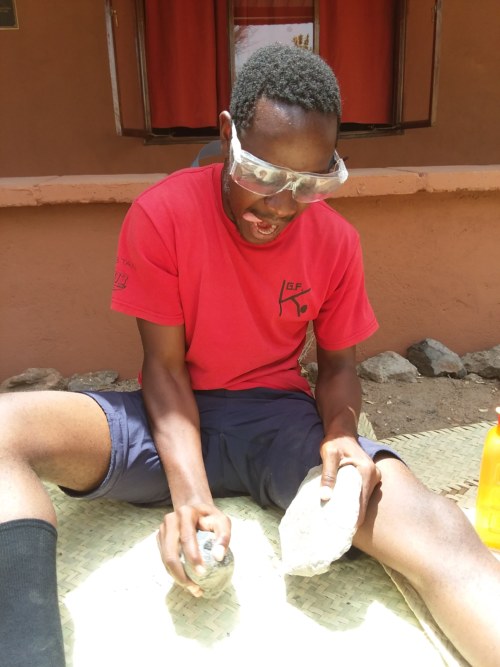
Tawanda deep in thought while flint knapping (Photo: Petra Peretin)
On Monday the field school went for a full day of hiking at Lothagam, one of the most spectacular sites that Turkana has to offer. This geological gem, consisting of two ridges and the sediments nested in between them, is also the site of two important pillar sites. These archaeological sites have been studied and excavated by Dr. Lisa Hildebrand’s research team in the past few years, and have yielded some very interesting results. Sitting on the Western ridge and with the breathtaking views of Lothagam as the background, Dr. Hildebrand explained the significance of these sites in our understanding of cultural and economic changes that took place during the Holocene in the Turkana Basin.
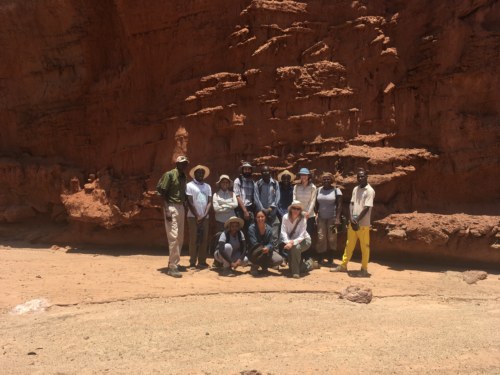
The field school crew at Lothagam (Photo: Lucía Nadal)
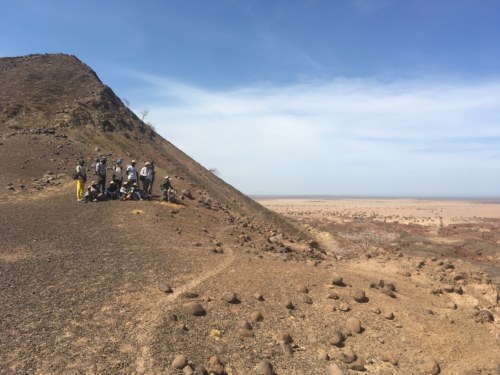
Taking in the spectacular views of Lothagam from its western ridge (Photo: Lucía Nadal)
To finish the field school, we took a three-day trip up North, to two of the most important stone tool sites: Lokalelei and Kokiselei. Stopping at the Kalakol pillar site, we made our way to Lokalelei where we conducted an archaeological survey and, based on this, discussed how to decide on the location of an excavation.
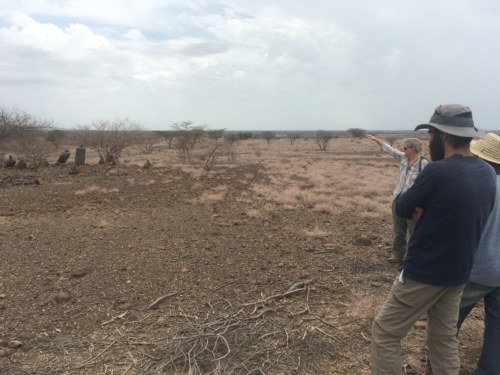
Dr. Hildebrand gives a lecture at the Kalakol pillar site (Photo: Lucía Nadal)
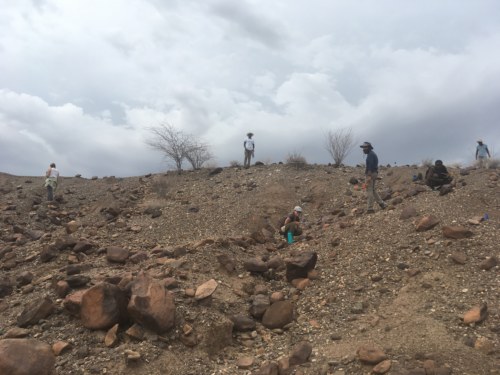
Students conduct a stone tool survey at Lokalelei (Photo: Lucía Nadal)
We pitched our camp in Nariokotome, home of one of the most important hominin fossil discovery sites and spent the next day visiting Kokiselei, where we explored the different excavation sites and their implication for stone tool culture evolution. We finished our camping trip by visiting the ‘Turkana Boy’ site, marked by an obelisk and a reconstruction of the Homo erectus fossil found there.
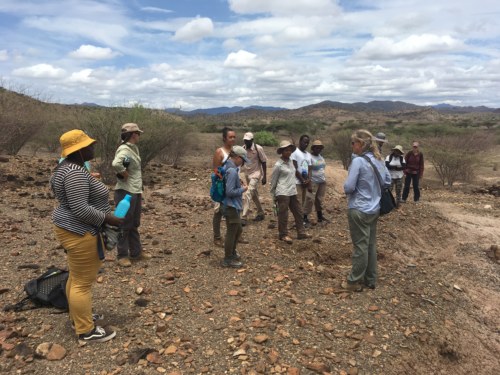
Dr. Hildebrand explains the archaeological importance of the Kokiselei site (Photo: Lucía Nadal)
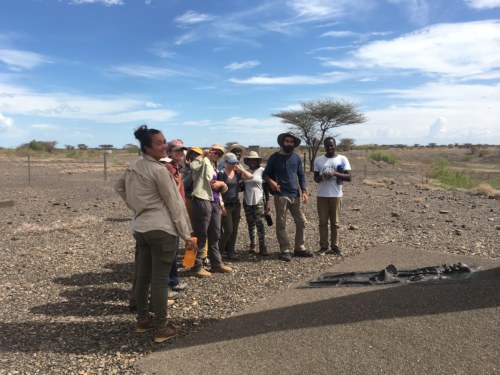
Students at the ‘Turkana Boy’ site, next to the replica of the fossil (Photo: Lucía Nadal)
Upon returning to TBI Turkwel the students prepared for their final archaeology exam and graduation! After receiving their diplomas from Dr. Lawrence Martin, Director of the Turkana Basin Institute, the field school crew got to enjoy one final goat roast while catching views of the sunset on the Turkwel river.
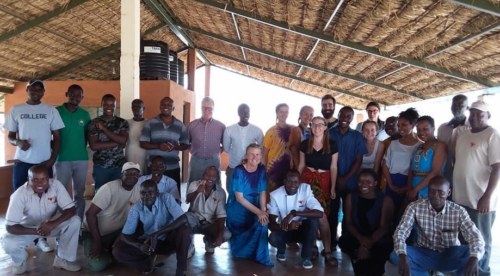
The TBI Spring 2019 Field School crew after graduation (Photo: Petra Peretin)
As this journey comes to an end, we say goodbye to Turkana which has been our home during this field school and to the new friends who have been our family for the past ten weeks.
Kwaherini and until next time!





